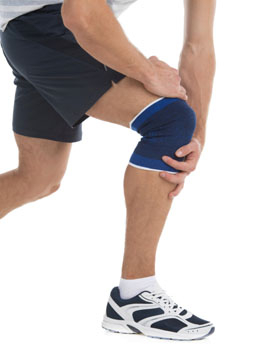Soreness in the leg muscles leads to unbearable pain and should be tended to immediately. This article gives you different ways in which you can overcome the discomfort.

Soreness in legs is not a pleasant feeling. It is characterized by pain in muscles of thighs, knees, calves, ankles, or feet. One of its major causes is overexertion of these muscles. Although not serious, the condition can worsen if not treated in time, and you might face difficulty in walking or running.
Causes of Sore Legs
Exercising the legs for the first time or after a long hiatus can lead to sore legs. Since you are not aware of how much pressure can your leg muscles take, you tend to over-exercise on the first day. As a result, the muscles get overstretched and you feel pain and stiffness in the legs.
Even those, who exercise regularly, may experience soreness in the calf and thigh muscles after a rigorous workout session. This can happen due to nutritional deficiency. When you increase the intensity of exercises, you need to balance out the amount of protein in the body to build those muscles. After all, the muscles are made up of protein. So, unless your workout level matches you protein-intake level, your muscles will become weak and you will suffer from leg cramps.
Sometimes, dehydration or a pulled muscle can also be responsible for soreness. Your body loses a large amount of water in the form of sweat when it performs any strenuous activity. If the water levels are not restored, muscles can become prone to involuntary contractions.
Muscles that have not been subjected to any kind of strenuous activity in a long time and are suddenly pressurized, may get strained and become sore and painful.
Treating Sore Legs
Firstly, every time you lie down to rest, raise or put up your feet, don't leave them hanging down off the edge of a bed or a chair. This will relieve pressure from the injured legs and allow the muscles to heal themselves. Later, apply ice packs by wrapping ice cubes in a towel and placing them over the sore leg for 10-15 minutes. Repeat this a number of times for faster and better results.
After two days or so, you can start heat application over the sore area. Soak a washcloth in warm water, squeeze out excess water, and wrap it over the affected area. Allow it to rest for sometime until you take it off, soak it in warm water, and repeat the entire process again. You can also apply heat with the help of a heating pad or a hot water bottle. As the localized swelling subsides, massage the affected area with a pain relieving balm. Next, roll up a plastic bandage on the massaged area and wrap it up with an elastic bandage. This will ensure that the heat released by the balm is trapped within, which in turn, will reduce tightness in the muscles.
If the soreness is extremely painful and intensified, it is advised that you take some pain relieving medicines to alleviate the pain. Non-steroidal anti-inflammatory medicines are often recommended and are suitable for controlling this kind of pain and inflammation. It is recommended that you talk to your doctor first about the dosage before taking these medicines.
As the soreness reduces, start doing some light stretching exercises. They help in loosening up the leg muscles and also improve their flexibility. To get rid of sore thighs, you must perform exercises that stretch the thigh muscles. To get rid of sore calves, walking on a leveled surface for half an hour is a good stretching exercise. If the pain intensifies while stretching the muscles, stop immediately.
Apart from ice packs, hot water treatment, and muscle stretching, a healthy diet replete with minerals and vitamins is recommended. Include foods that are rich in proteins, carbohydrates, and fiber in your daily diet for faster recovery from soreness in legs. It is equally important that you keep you body hydrated by drinking 8-10 glasses of water daily.
If, even after 3 days of home treatment, you fail to see any improvement in your condition, then there is a high probability that the problem is serious and it is advised that you see the doctor immediately. Finally, once you have recovered from muscle cramps or soreness, you must take care of a few things in order to prevent its recurrence. Appropriate warm up exercises before any strenuous activity, keeping your body well-hydrated at all times, and wearing the right kind of footwear, are all simple measures you can take to prevent your leg muscles from getting sore.


 Soreness in legs is not a pleasant feeling. It is characterized by pain in muscles of thighs, knees, calves, ankles, or feet. One of its major causes is overexertion of these muscles. Although not serious, the condition can worsen if not treated in time, and you might face difficulty in walking or running.
Soreness in legs is not a pleasant feeling. It is characterized by pain in muscles of thighs, knees, calves, ankles, or feet. One of its major causes is overexertion of these muscles. Although not serious, the condition can worsen if not treated in time, and you might face difficulty in walking or running.